Original URL: https://www.theregister.com/2010/11/04/nuclear_renaissance_interview/
Nuclear reaction: what's next in energy science?
What to expect now even tree-huggers love nukes
Posted in Science, 4th November 2010 11:05 GMT
Interview This year, Imperial College graduated its first nuclear scientists for a very long time. After years in the doldrums, other universities are also increasing their activity. Is this a sign of a Nuclear Renaissance?
Perhaps it is. Even deep Greens are dropping long-standing objections to nuclear power generation. I got in touch with Imperial's Professor Robin Grimes, who recently co-authored a Science paper with William Nuttall indicating how the nuclear industry could re-emerge. Here's an interview that encompasses the current state of play, and some ideas about how the next 40 years could take shape.
Professor Grimes disagrees that nuclear has been moribund - it just seems that way in the UK and the USA, he says.
"We've been in stasis. Only in the last five years has the amount of power generated by nuclear started to decline. It's not as catastrophic as has been described. While we've not been building new reactors here, in Asia, they have been, and the [North] Koreans and Japanese, and China and India, are ramping up. There's been a shift of activity from the west to the east. The number of reactors has increased."
Ten new nukes are planned for the UK, with the first becoming operational in eight years. The problem here is one a skills shortage, caused by an ageing skills base. You need "Squep" people (suitably qualified and experienced) to monitor the safety of the facilities. The Nuclear Installations Inspectorate, the enforcement arm of HSE's Nuclear Directorate, recently acknowledged this by raising pay rates, hoping it could hold back the ageing experts from early retirement, or even lure them out of retirement.
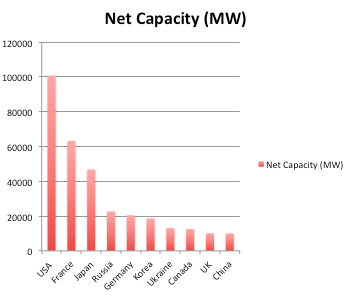
Top 10 Nuclear Nations (2009) by operational output
Source:IAEA
"I'm not sure if we can call it a Lost Generation, but it almost feels like one," says Grimes. "We are in significant danger of losing the real experience as the skills base is built up again," he says. "The amount of activity has started to increase dramatically, but they're inexperienced."
A look at the third-generation nuclear technology on offer shows incremental improvements, and bears out a clutch of new ideas. The latest reactors are smaller and more modular. The design focus is on passive safety features, and using materials that are radiation resistant.
Examples include the AP1000 from Westinghouse, Areva's EPR (Areva design).
Unlike today's thermal reactors, the Generation IV designs currently on the drawing board, take in the whole fuel cycle as part of the design concept. The reactor burns get rid of the highly radioactive nasties - including plutonium and the minor actinides. In their Science paper, Grimes and co-author William Nuttall write that "some of these options could sustain power production for more than 1000 years".
Surprisingly, the current vogue over the past five years has swung towards smaller reactors - below 1GWe (Gigawatt-electric) output. Why, I wondered, go for smaller plants when the planning process is so long and site acquisition is so expensive? Why not just build a big one?
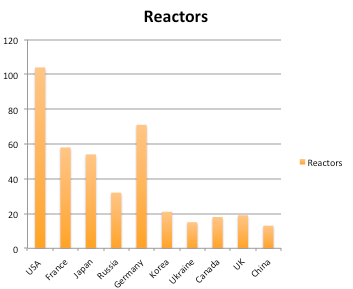
Top 10 Nuclear nations (2009): number of reactorsSource: IAEA
Grimes says: "It depends on how much you need. There's little point producing 1GWe when you only need a 10th of that, 100MWe." Westinghouse's AP1000 is, as the name suggests, a 1GWe station, but it started off as a 600MWe design.
"You might want 300MWe now, and another 300MW in five years' time. If you've got the infrastructure you can modularise it."
Costs
Nuclear is unchallenged when it comes to producing baseload electricity, but controversy rages over the true long-term cost. Grimes acknowledges that CO2 reduction targets help enormously.
"I don't see nuclear as something that produces all your electricity, it's a mix, and getting the balance right is crucial," he says. "It's going to be different for different countries; I imagine we'd want to build a lot of wind turbines, but we're going to need nuclear as a our baseload capacity - and a lot of it."
Disposal costs will fall by the time the Generation IV reactors come online.
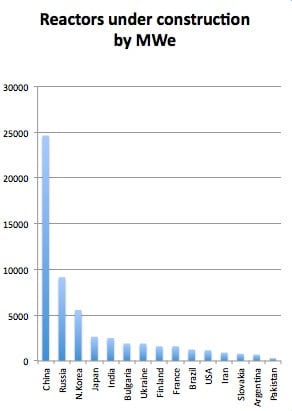
Nuclear energy facilities under construction, measured by output (MW). China has 24 underway and Russia 11.
Source: IAEA
"My personal opinion is that a complete recycle, with complete reuse of uranium and plutonium and the minor actinides is feasible, but it leaves us with a 300-year problem."
Which is a major improvement, of course. Currently some of the isotopes in the actinides have a half-life of 100,000 years. We should remember where we left stuff 300 years ago, particularly if it's radioactive.
Readers regular raised a couple of fascinating developments in nuclear research. What did Grimes make of them?
One is using the thorium fuel cycle. Thorium is four times more abundant than uranium. India is the biggest backer of thorium reactors. Grimes took a visit a year ago to have a look [pdf].
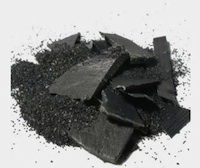
Thorium: There's a lot of it about
Thorium, however, doesn't have a fissile isotope, which complicates things a bit: you have to breed the artificial isotope uranium-233. Grimes points to another advantage.
"Because you've started with a lower mass isotope number, you produce less of the higher atomic number isotopes - plutonium and minor actinides - than you do with a uranium-plutonium cycle.".
"It will happen, because India wants it to be so. It has a lot of thorium, and not a lot of uranium. So that will allow us to get over the technology barrier; it could well be that it's a sensible and viable option."
Another factor comes from a quite unlikely source. Norway has one of the highest per-capita GDPs in the world, thanks to North Sea oil, and has reaped the benefits of hydroelectric power. But Norway discovered it may also be sitting on one of the world's largest supplies of thorium oxide.
Pebbles: The 'politically correct' reactor
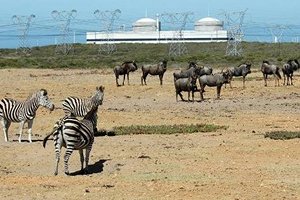
Eco-friendly? Koeberg's PBMR project never got off the ground.
Another remarkable innovation in nuclear energy is the pebble-bed reactor, variously described as the " politically correct atomic reactor" [pdf], or the nuclear power plant you could leave in the hands of Homer Simpson.
The idea isn't new, it was first demonstrated in 1967. But with traditional concerns about nuclear plants (such as meltdown) made moot by the inherently safe design, it's curious that pebble-bed designs are not common. It seems they should be as common as neighbourhood transformer stations. (Reactors used in nuclear-powered icebreakers are as small as 35MWe.)
South Africa last month signalled it would end its 11-year PBMR (Pebble Bed Modular Reactor) project, shedding most of the 800 staff working on the project.
China and Germany continue to develop designs similar to the PBMR.
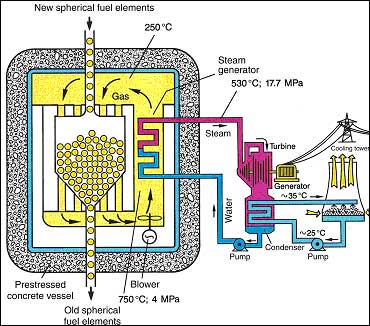
A pebble bed reactor design
Source:European Nuclear Society
"It's always the bridesmaid," says Grimes. "I'd like to see it developed. As scientists, we need that flexibility of technologies going forward. PBMR is inherently safe and it's modular. But the small LWR reactor designs are also modular in the same way, and in terms of safety, the AP1000 has equivalent safety features such as passive cooling. The advantages of PBMR are definitely starting to be clear in the LWR design. That's taken the wind out of its sails."
"In a traditional reactor design, the decay heat – once fission has been turned off – is enough to destroy the reactor core. There are two things you can do - even if you lose your water, you can have a passive water volume that flows through the reactor from big tanks on the roof. You don't have to do anything - it's a passive process. Even though water's running out, it's removing the decay heat. It is exponential decay - so the residual amount of heat is no longer a threat. However there are additional features - natural convective processes that keep water moving around outside and keep the vessel cool. It's really simple."
Nuclear still leaves proliferation problems, but as Grimes points out, "nothing is proliferation-resistant, there are just degrees of it."
And fusion?
"Sure it's possible. JET has been a great success, there's no question. But JET is a long way from a commercial reactor; even ITER is a long way from a commercial reactor. We need an entire generation of fission reactors with 60-year lifetimes."®
Andrew welcomes your emails